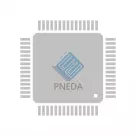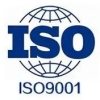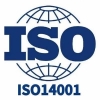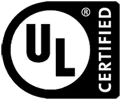Cadence Expands System IP Portfolio with NoC for Optimized Electronic System Connectivity
七月 8 2025
2025-07
Passive Components
Caddock Electronics

Cadence Electronics (USA) recently announced the expansion of its system IP portfolio with the addition of Cadence® Janus™ Network-on-Chip (NoC). As today's computing needs continue to increase, larger and more complex system-on-chips (SoCs) and disaggregated multi-chip systems are rapidly gaining popularity in the market, and data transmission within and between silicon components has become increasingly challenging, affecting power, performance and area (PPA). Cadence Janus NoC can efficiently manage these synchronous high-speed communications with extremely low latency, helping customers achieve their PPA goals faster with lower risk.
"Cadence is a trusted leader in IP and design quality, and we continue to invest in our foundational interface and processor IP, system IP, software and design services to help customers develop differentiated disaggregated designs," said Boyd Phelps, senior vice president and general manager of the Silicon Solutions Group at Cadence. "The addition of the Cadence Janus NoC to our growing IP portfolio system is an important milestone in this strategy. We are moving from an IP provider to a SoC design partner, bringing greater value to our customers, allowing them to focus their valuable engineering resources on differentiating their silicon."
The Cadence Janus NoC is based on Cadence’s trusted and proven Tensilica® RTL generation tools. Customers can use Cadence’s broad portfolio of hardware and software products to perform software and hardware simulation of their NoCs, and use Cadence’s System Performance Analysis (SPA) tool to gain insight into the performance of the NoC. The flow supports architectural exploration to help achieve the best NoC design to meet product requirements. The NoC is built on Cadence’s long-standing leadership in IP and design quality, supported by a team of engineers that leads the way in customer satisfaction.
The Cadence Janus NoC effectively addresses the routing congestion and timing issues associated with today’s complex SoC interconnects that are often not apparent until physical implementation. Cadence’s first-generation NoC not only addresses today’s most pressing needs, but also provides a platform for future innovations, such as support for industry-standard memory and I/O coherency protocols. Features and benefits available today include:
Ease of use: Cadence’s powerful, well-designed graphical user interface (GUI) makes it easy to configure the NoC from small subsystems to full SoCs and future multi-chip systems.
Faster time to market: RTL is optimized for PPA, enabling SoC designers to achieve bandwidth and latency goals. Packetized information improves wire utilization, reduces wire count, and eases timing closure.
Reduced risk: The NoC’s built-in power management, clock domain crossing, and width matching capabilities help reduce design complexity.
Fast design turnaround: Cadence's extensive software simulation and hardware emulation capabilities enable early architectural exploration to quickly validate PPA results and ensure that the configuration meets the design requirements.
Scalable architecture: Customers can design a subsystem and reuse it in the context of a full SoC with a NoC for future reuse in multi-chip systems.
Flexible: Cadence NoCs are compatible with any IP with industry-standard interfaces, including AXI4 and AHB.
"We are excited to see Cadence expand their IP portfolio by investing in system-level solutions," said Suk Lee, vice president and general manager of the Ecosystem Technology Office at Intel Foundry. "NoCs are critical to nearly every subsystem in today's SoCs, so we are very supportive of Cadence's NoC offerings and look forward to their continued expansion of their IP portfolio in the future."
您可能感興趣的產品
 |
AMPDGFH-A15T | OSC MEMS XO DUAL OUTPUT | 4032 More on Order |
 |
AMPMDED-33.333333T3 | MEMS OSC XO 33.3333MHZ CMOS SMD | 2178 More on Order |
 |
AMPMAFC-12.2880T3 | MEMS OSC XO 12.2880MHZ CMOS SMD | 8694 More on Order |
 |
AMPMADB-49.1520T3 | MEMS OSC XO 49.1520MHZ CMOS SMD | 8424 More on Order |
 |
AMPMAGA-18.4320T | MEMS OSC XO 18.4320MHZ CMOS SMD | 8028 More on Order |
 |
AMPMEEC-8.0000 | MEMS OSC XO 8.0000MHZ CMOS SMD | 3472 More on Order |
 |
AMPMDGD-40.0000 | MEMS OSC XO 40.0000MHZ CMOS SMD | 5292 More on Order |
 |
AMPMGDD-52.0000 | MEMS OSC XO 52.0000MHZ CMOS SMD | 7722 More on Order |
 |
ABDFTCXO-12.800MHZ-L-2-T5 | XTAL OSC TCXO 12.8000MHZ LVCMOS | 2790 More on Order |
 |
ASTMUPCV-33-19.200MHZ-EJ-E-T | MEMS OSC XO 19.2000MHZ LVCMOS | 3528 More on Order |
 |
ASTMUPCE-33-20.000MHZ-EY-E-T3 | MEMS OSC XO 20.0000MHZ LVCMOS | 4788 More on Order |
 |
AST3TQ53-T-24.576MHZ-1-C-T2 | XTAL OSC TCXO 24.5760MHZ LVCMOS | 5670 More on Order |
 |
AX5PAF4-1100.0000C | OSC XO 1.1GHZ 3.3V LVPECL | 4248 More on Order |
 |
AX7DBF4-800.0000T | XTAL OSC XO 800.0000MHZ LVDS SMD | 4302 More on Order |
 |
AX5DAF1-480.0000C | OSC XO 480MHZ 3.3V LVDS | 3744 More on Order |
 |
AX5PBF2-580.0000T | OSC XO 580MHZ 2.5V LVPECL | 3562 More on Order |
 |
ASTMHTD-12.288MHZ-XR-E | MEMS OSC XO 12.2880MHZ LVCMOS | 5850 More on Order |
 |
ASTMHTE-12.000MHZ-XC-E-T | MEMS OSC XO 12.0000MHZ LVCMOS | 7038 More on Order |
 |
ASVMB-133.333MHZ-XY-T | MEMS OSC XO 133.3330MHZ LVCMOS | 2610 More on Order |
 |
AMPMGFB-12.0000T | MEMS OSC XO 12.0000MHZ SMD | 15906 More on Order |
 |
ABM13W-40.0000MHZ-7-N2Z-T5 | CRYSTAL 40MHZ 7PF SMD | 4932 More on Order |
 |
ABM13W-37.4000MHZ-8-D1G-T5 | CRYSTAL 37.4MHZ 8PF SMD | 8442 More on Order |
 |
ABM10W-50.0000MHZ-8-J2Z-T3 | CRYSTAL 50.0000MHZ 8PF SMD | 4104 More on Order |
 |
ABM8W-16.9344MHZ-6-B1U-T3 | CRYSTAL 16.9344MHZ 6PF SMD | 8028 More on Order |









